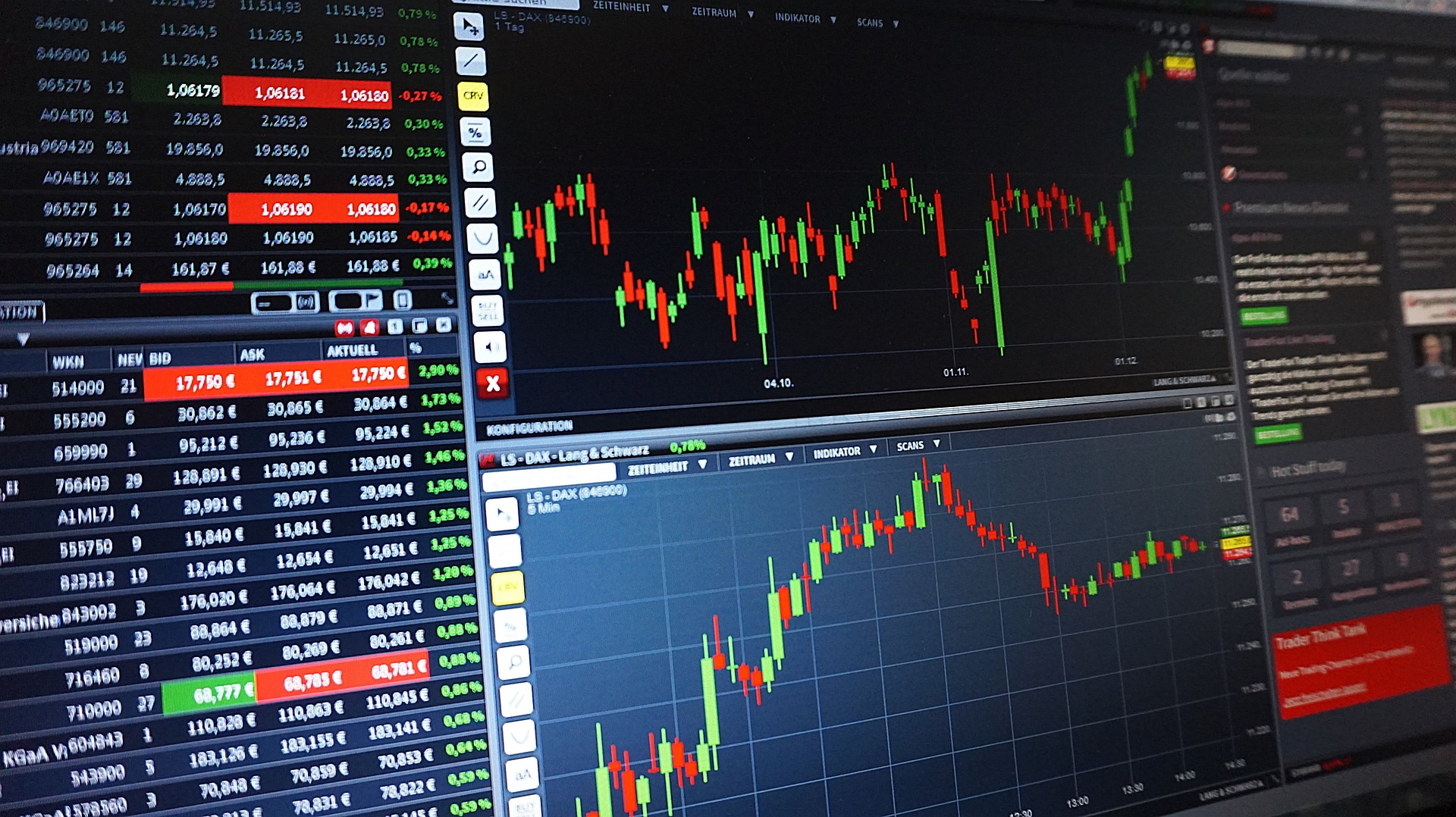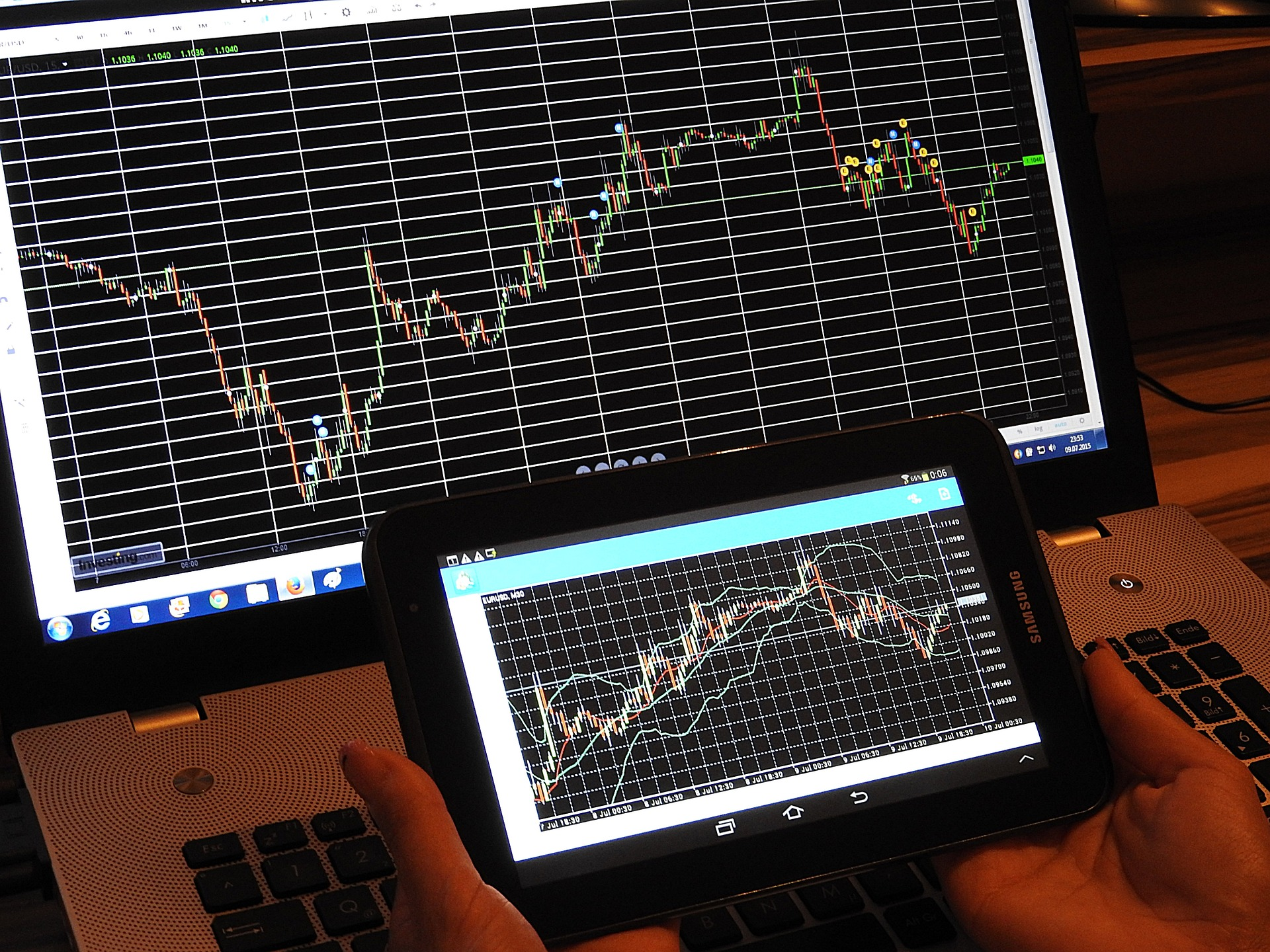Trading Strategies or Trading Tactics support systematic and organized navigation of the global financial markets. An individual trader can make superior trading selections with the use of different trading strategies.

But what constitutes a sound trading plan? The top 5 basic categories of trading strategies and approaches that every trader should be familiar with are covered in this guide. All of these strategies show results based on their technical analysis.
Let’s Start with the Basics – Definition of a Trading Strategy
A strategy of trading is a collection of guidelines that specify the precise conditions under which a trader must operate. Chart pattern analysis, price action technical analysis, technical analysis, and fundamental analysis may all be on the list of requirements. Day trading, swing trading, and seasonal trading are all common trading techniques.
By establishing a set of guidelines, or a methodology, for making a trading decision, trading strategies simplify the process of data analysis about the market’s activity. It can be confusing to navigate the enormous variety of trading strategies and tactics.
A collection of rules gives market analysis structure, emphasis, and consistency. These trading strategies can be used on any trading platform.
Top 5 Trading Strategies of 2023
There are numerous types of trading strategies and tactics available. There is typically something for everyone, even though the sheer number of approaches ways may appear overwhelming. This is one of the reasons people from all walks of life join the financial markets.

Most trading techniques, whether they involve short period, long-term, or investment trading, will fall under one of the various trading approaches described here.
The most popular categories of trading methods are:
-
Day Trading
-
Seasonal Trading
-
Positional Trading
-
Investing Strategies
-
Swing Trading
Day Trading – Definition & How to Carry Out Day Trading?
Trading securities many times throughout a specific trading day is known as day trading. Best Traders typically exit their positions by the close of the day. It is uncommon for active day investors to keep positions for more than a single day. The one-hour, four-hour, 30-minute and fifteen-minute charts are some of the widely utilized chart timeframes in this trading.

Day trading is popular among novice traders as well as professional traders because it offers the chance to place numerous lucrative trades in a single day. Day trading is the most difficult to master and can lead to significant losses for the untrained, even though it can be extremely profitable. Unless someone has undergone extensive training and conditioning, it is not recommended for most people to make several high-risk economic choices in a short time frame.
How to Carry out a Day Trading Strategy?
Even if day trading is difficult, it is feasible to acquire day trading strategies and practice them until they are perfected. There are some essential components to creating a day trading plan, whether you’re day trading forex or equities, such as:
Market Selection:
Many people concentrate on day stock trading, but day trading strategies may be applied to any significant market. Day traders frequently make transactions based on very brief price swings, thus for day traders, it’s crucial to select markets with cheap commissions and narrow spreads.
Trading Timeframe:
There are various day trading timeframe options available. Choose a timeframe that works with your schedule so you can get a feel for how it progresses.
Tool Selection:
There are a ton of trading indicators at your disposal as you learn how to day trade. To truly master how they operate, concentrate on one or two.
Trade Risks:
Risk management and trade sizing are crucial. A streak of consecutive losses is sure to occur at some time in your trading career, so you do not wish to risk too much on each trade.
Benefits of Day Trading
-
No Overnight Risk.
By definition, intraday trading excludes any overnight holding of positions.
-
Limited Risk Over Day.
The dangers associated with longer-term trading are minimized by a day trader’s limited use of short-term trades, which typically last between one and four hours.
-
Flexible Trading Time.
People who want trading flexibility may benefit from day trading. A day trader may open one to five positions during the day, closing each one as goals are reached or when they are called out.
-
Multiple Transaction.
In Day Trading Strategy, you can use both domestic and foreign markets, initiate and close a lot of positions during the day, and benefit from the 24-hour currency market. This offers various arbitrage opportunities.
Disadvantages of Day Trading
-
Requires Patience & Discipline.
Intraday trading demands discipline, much like other short-term trading strategies do. To reduce their risk, many traders should use a pre-planned strategy that includes entry and exit levels.
-
Flat Trading.
When this happens, it is normal for some locations to remain static throughout the day.
Seasonal Trading – Definition and Examples
Trading seasonal securities include betting on the potential of an annual pattern that can be repeated. Due to recurring trends in the weather, official economic statements, and business earnings, many markets frequently display seasonal features.
A seasonal dealer would select their trades using these seasonal tendencies as a statistical advantage. Seasonal trading can therefore provide the trader with the larger context they require for their trading techniques and strategy methodologies, even though it is not a buy or sell timing scheme.
Seasonal Trading Strategies
A prominent stock trading method incorporates one of the more well-liked seasonal investing tactics. In trading, there is an adage that goes, “Sell in May and go away.” This trade graphic symbolizes the seasonal lull that the stock market often undergoes from May through October.
A 2013 study that looked at this phenomenon concluded that it indeed exists between 1998 and 2012, with stock returns delivering bigger benefits in the November to April timeframe than during the May to October period, as reported by the Financial Analyst Journal. However, this does not necessarily imply that the summer was a bad time overall.

The ‘Santa Claus Rally,’ another well-liked seasonal stock trading method, does, however, exhibit the observation. The stock markets have the propensity to rise during the final five days of trading of the year as well as the first 2 of the next year.
It’s critical to keep in mind that seasonal trading only gives a trading technique a slight advantage. A seasonal trader will never rely simply on one measurement of analysis and would instead look at various indications and tools to find markets that offer the most clarity for trading.
Advantages of Seasonal Trading
-
It’s a valuable Activity.
Once a trend identification technique has been developed, trend trading strategies are excellent for persons with limited time.
-
Several Chances for Trading.
A dominant trend may present several trading entries and exit chances. Trend trading strategies may also entail taking “both sides” of the market.
Disadvantages of Seasonal Trading
-
Overnight Danger.
Since trend trades are frequently active for several days, they could be more susceptible to overnight hazards than other techniques. Stop-loss orders can, however, be used to lessen this.
Positional Trading
In positional trading, most traders purchase and sell securities intending to hold them for several weeks or months. When making trading decisions, position traders often use daily, weekly, and monthly charts with some form of fundamental analysis.
Position traders are essentially active investors since they aim to hold deals for longer periods and are less concerned with short-term market changes. This kind of trading can easily turn up your prospective investment.
The essential emphasis for a position investor is the benefit to the danger of a trade. Position traders usually have a lot of very normal losing tradings just before picking up the big fish in the trade since they aim to hold trades over several weeks or months.
To boost the frequency of transactions made and so diversify their portfolio, this enables position traders to accept tiny trading risks.

Components of Position Trading
Rule 1:
Only enter long or purchase trades when the value is above the moving average. Use only short, or sell, transactions when the price is moving below the moving average.
Rule 2:
Only engage in long trading if the MACD Indicator is above 0, which indicates that momentum is shifting in favor of the bulls. Only engage in a short transaction if the MACD Indicator is below 0, which signifies a change in momentum toward the downside.
However, for trading reasons, a position trader looks for these long-term trending situations.
Advantages of Position Trading
- High Earnings.
Since there is less chance of error than traditional trading, position trading enables traders to use greater leverage.
-
Less Tension.
The fact that positions do not need to be verified every day is one of the main benefits of position trading.
Disadvantages of Position Trading
-
Substantial Loss.
Position traders sometimes disregard little changes that might develop into full-trend setbacks and cause substantial losses.
-
Swap.
The swap is a broker-paid commission. The swaps might build up significantly if the trade is held for a long time.
Investment Strategies
There are many parallels between trading and investment techniques, but there is also one significant distinction. Trading methods are made to perform more short-term positions, whilst investing techniques are made for investors to retain positions for the long term.
The majority of investment methods are stock investment strategies since, theoretically, investing in productive companies has limitless upside potential. The risk of investing in stock in a real company is minimized. However, if the business fails, the investor may lose everything they have put in.

It is common practice for investors to attempt to imitate the measures of industry leaders like Amazon or Facebook when developing the criteria or conditions for their investment strategies. Although this is not an easy task, there are other businesses that investors attempt to place themselves following particular investing techniques, such as:
Growth Investment:
Growth investment strategy methods seek to find stocks with the most promising growth potential. In general, this entails locating businesses that are at the point of maturity in their business cycle. For instance, many growth-oriented investors are drawn to technology stocks since these firms frequently go public to generate money and advance their level of maturity.
Value Investment:
Value investing strategy methods seek to select stocks that offer the best value for the money. Growth stocks often have high prices because they have the most promising futures. Companies with value-based stocks generally trade at a discount as a result of recent unfavorable news reports or subpar management.
Value investors will keep an eye out for improvements in the company’s conditions and will put money into the company’s turnaround plan.
Swing Trading Strategy
A swing trading strategy is where investors buy and sell stocks intending to hold them for several days or even weeks. Swing traders, sometimes referred to as trend-following traders, frequently use the daily chart to place trades that follow the market’s general trend.
Some swing trading techniques simply base their trading decisions on the technical analysis of a price chart.
As additional detail is needed to support holding transactions over several days or longer, swing trading systems frequently also employ fundamental data or numerous times frame research.
Swing Trading Components
Utilizing trading indicators is one of the more well-liked trading strategies for swing trading. There are many various kinds of swing trading indicators available, and each one has advantages and disadvantages.
What are the ideal swing trading indicators? The Stochastic Oscillator, MACD, or RSI (Relative Strength Index) is frequently used by swing traders to spot signs of a trend continuation or a change in price movements.
The majority of swing trading method charts consist of three parts:
Candles:
As a result, each bar or candle represents a single trading day.
Trend Filter:
A fifty-period trend line serves as a trend filter, and it is indicated by the red curved line that passes across the price bars.
Stochastic Indicator:
At the bottom of the chart, a stochastic indicator (one of the mostly used technical indicators) is utilized to spot overbought and oversold circumstances. With these swing trading strategy tips, you can easily carry out this strategy.
The following are a few rules in Swing Strategy:
Rule 1:
Only enter long or purchase trades when the price is above the moving average. Use only short, or sell, transactions when the market is moving below the moving average.
Rule 2:
The Stochastic Oscillator should be below 20, which denotes the oversold region, to enter a long trade. If the stochastic indicator is over 80, which denotes an overbought area, then only engage in a short trade.

These straightforward guidelines might act as a springboard for the trader to assist them in investing with the market and managing their entries.
As swing traders strive to hold trades for a few days or longer, appropriate swing trading strategies will of course include various requirements to address specific bar trends, or assistance and resistance level for initial cost and stop loss setup, in addition to higher timeframe analysis to spot take profit levels. RSI (Relative strength index) is also used in this type of trading style.
It can be helpful to systematize an approach inside the overall trading strategy when employing the finest indicators for swing trading style so that you aren’t left wondering what the indication is telling you. When trading the markets, preparation is essential for success.
Advantages of Swing Trading Strategy
-
As a hobby, it is possible.
Compared to other trading styles, swing trading may be ideal for those who have a restricted amount of time. However, learning how oscillation patterns function does require some investigation.
-
Several Chances for Trading.
Swing trading allows traders to go both long and short along a variety of securities because it includes trading “both sides” of the market.
Disadvantages of Swing Trading Strategy
-
Overnight Danger.
There will be some overnight trades, which will increase the dangers, but you can reduce them by putting a stop-loss option on your holdings.
-
A lot of research is Necessary.
Understanding how to evaluate markets requires extensive research because technical analysis uses a wide range of technical signals and trends.
Which One is the Best Trading Strategy?
All of these strategies are among one the best trading strategies. The greatest trading strategy is a question of opinion because all trading tactics have the potential to perform well under certain financial market circumstances. But it’s advised to choose a trading approach based on your temperament, level of self-discipline, available funds, risk tolerance, and availability.
Which Strategy is Suitable for Beginner Traders?
Since the pattern is your friend, following it is most likely the simplest trading technique for a newbie. Contrarian investing is the practice of trading against the crowd. When the stock is rising, you short a stock, and when the stock market is falling, you buy a stock.
For a newbie, this trading strategy could be challenging. Scalping and news trading demand mental alertness and quick decision-making, which, once more, may be challenging for a novice.
How to Select the Strategy that Suits You?
You don’t have to adhere to just one trading technique, and choosing one doesn’t have to be difficult. It’s important to keep in mind that the greatest traders can adjust their trading plans in response to opportunities. As a result, it is wise to become familiar with each specific trading technique. By combining various trading strategies, you will improve your situational awareness.
However, keep in mind that you shouldn’t lose heart if you initially lose money. To enhance your trading skills and become a great trader, you must be patient and accept that you will make mistakes and lose money. So, to be a successful trader you must choose a strategy that suits your needs.
Is it Advisable to Hold a Day Trade Position overnight?
To cut losses on a losing transaction or to boost earnings on a winning trade, a day trader could want to maintain a trading position overnight. If a trader is just trying to avoid incurring a loss on a horrible deal, then, generally speaking, it is not an advisable idea.
The possibility of negative news having an impact as well as the need to meet margin requirements and additional borrowing charges are possible risks associated with keeping a day trading position overnight. The danger of keeping a position open overnight can outweigh the likelihood of a successful outcome. Resultantly, a successful outcome is the true identity of successful traders.


